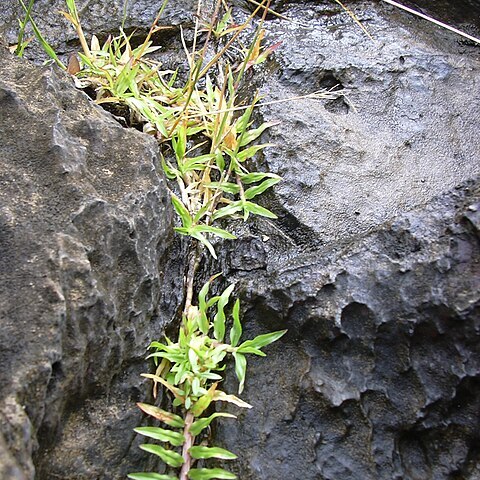Perennials, mostly tufted. Leaf-blades linear, often harsh and glaucous; ligule a short membrane or a line of hairs. Inflorescence a terminal panicle with whorls of slender persistent branches bearing terminal racemes; each raceme reduced to a triad of 1 sessile and 2 pedicelled spikelets with linear pedicels (rarely an additional pair of spikelets present), commonly the sessile spikelet pallid or yellowish with fulvous callus-beard and the pedicelled spikelet purple. Sessile spikelet ± laterally compressed; callus oblique, obtuse to pungent; lower glume cartilaginous, rounded on the back, sometimes spinulose on the margins; upper glume often awned; lower floret reduced to a hyaline lemma; upper lemma hyaline, bidentate or entire, with a glabrous or pubescent awn. Caryopsis narrowly ellipsoid. Pedicelled spikelet ♂ or barren, narrowly lanceolate, awned or awnless.
Sessile spikelet laterally compressed, its callus elongated and obtuse to pungent, often large and conical; glumes subequal, unequally awned or awnless; inferior glume chartaceous to coriaceous, often spinulose on the keels and muricate or mammilate on the back; superior lemma entire or bilobed, awned or awnless; awn glabrous to pubescent and usually prominent.
Caespitose perennials, sometimes rhizomatous; leaf sheaths sometimes keeled, the basal flabellate-imbricate; ligule a short membrane or a line of hairs; leaf laminas flat or conduplicate.
Inflorescence a panicle, its primary branches whorled, simple; racemes 1–many-jointed; pedicels linear, filiform, never longitudinally grooved.
Pedicelled spikelet male or neuter.

